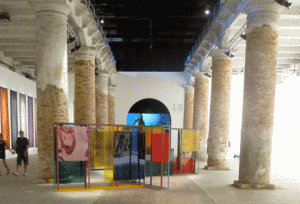
I’m not sure that I “get” contemporary art. Well, maybe I understand a piece or two, but the empty sheetrock mud bucket hanging from the ceiling over a pile of cinderblocks still isn’t art to me.
On the other hand there is always something to see that is fascinating at the Biennale. I always come away with a new way to look at life. Recently, I have been experiencing more and more pieces of art that draw the observer in as a part of the art. Rather than standing back and looking at, or appreciating, art, I find myself participating in the artwork. Sometimes, I have no intention to be part of the work, but the artist finds ways to bring me into the art on the artist’s terms, not mine.
The best artwork of this Biennale for me is Christian Marclay’s “The Clock.” It is a 24-hour movie that focuses on clocks in movies. In a brilliant work of editing, Marclay has created a montage of time as it takes place in the cinema. He strings different movies together with scenes that feature clocks and the time of day. The movie is timed to coincide with the actual time where people are watching it.
This creation is wonderful and it finds a way to suck you into its focus on time. With hundreds of other artworks to be seen at the Biennale, you soon find yourself trying to figure out how much time you have to spend watching time take place in The Clock. There is a realtime tension. Should I leave and see other pieces? Or, should I stay, comfortably on a couch and enjoy this one?
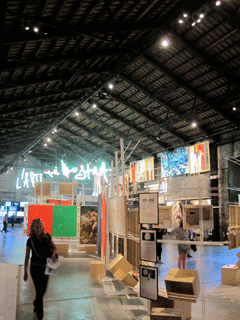
The Italian pavilion that is at the far end of the Arsenale section of the Biennale is a rush of art. It is almost overwhelming after the minimalist presentations that line the Corderie section of the Arsenale. Here, visitors an find a museum of the mafia, complete with gruesome newspaper photos detailing mafia history. Flags made of rags, churches made of pasta, giant photos, neon structures, wounded centaurs and more.
In honor of the 150th anniversary of the unification of Italy, artists from every part of Italy have been invited to participate in this kaleidoscope of Italian contemporary art.
Some of my other favorites are in the U.S.A. pavilion in the Gardini section of the show. Here, when one uses an ATM to get cash, an organ plays some rich tunes. It is a brilliant and not-so-subtle play on the religion of money. And upside-down in front of the pavilion is a tank. Twice a day, a member of the U.S. track and field team climbs onto a treadmill astride on of the tank treads and begins to run. As he runs, the tank treads turn and clank away.
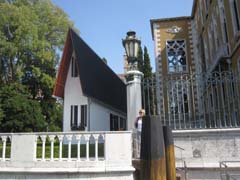
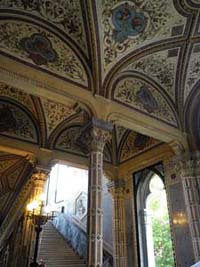
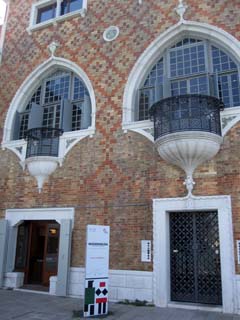
The next installation of my Biennale report will focus on five different in-town venues (most free) for the art show that allow visitors to peek into the soul of the old city by going into Venice’s palazzi and discovering a world from centuries ago.
Photos: By Charlie Leocha (Biennale Arsenale and Gardini) and Karen Cummings (Russian exhibit and Palazzo Franchetti Glasstress)

Charlie Leocha is the President of Travelers United. He has been working in Washington, DC, for the past 14 years with Congress, the Department of Transportation, and industry stakeholders on travel issues. He was the first consumer representative to the Advisory Committee for Aviation Consumer Protections appointed by the Secretary of Transportation from 2012 through 2018.



